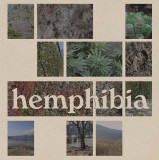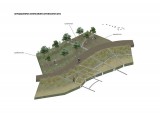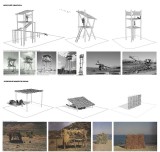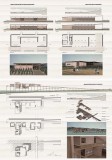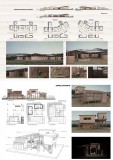Supervisors:
2023
This thesis presents an architectural proposal for the revitalization of a portion of the lakeside front of Lake Vegoritida. The plan involves the reintroduction of industrial hemp farming and the establishment of processing facilities. This revitalization effort weaves the new hemp cultivation into the existing landscape and the lake, creating a network of growth and production for hemp-based biomaterials.
The design of this network, which merges primary and secondary production, is rooted in local stories about past practices of industrial hemp cultivation and processing. A productive cycle, from planting to spinning thread, was once a collaborative effort between village inhabitants, reliant on the lake during both the growth and processing stages.
The proposal aims to establish an on-site productive program with basic processing facilities, engaging both transient and permanent residents in the production process. It’s an interweaving of past, present, and future; besides fiber production, the program encompasses the production and research of innovative hemp-based biomaterials. Accommodation units are provided for visiting researchers, craftsmen, and farmers. In certain areas of the revitalization, the production network intersects with residential life, with trails along the water’s edge, through the crops, or within a stone maze. Zones are also allocated for the preservation and promotion of native vegetation. The implementation of diverse farming practices promotes biodiversity and reinstates a sustainable and harmonious progression of agricultural activity within the existing ecosystem.
Lastly, the program is multistructured, with the subject-amphibians living under corresponding conditions. They oscillate between being within and outside the lake, amidst crops or native plants, in states of grounding or floating. Their roles (as farmers-researchers-artisans) shift according to their environment, season, or necessity, within a perpetually evolving landscape.
